Banyak penemuan arkeologi yang aneh
telah dibuat dalam sejarah modern Ratusan artefak telah digali yang
bingung ilmuwan dan menantang manusia modern melihat sejarah . Banyak
objek-objek ini telah diberi label dari artefak tempat atau anakronisme .
Ini penemuan kepurbakalaan selalu kontroversial dan
komunitas ilmiah sangat selektif dalam apa yang mereka dapat menerima
kenyataan . Setiap objek dalam daftar ini telah dituduh sebagai sebuah
lelucon yang rumit . Dalam banyak kasus , konspirasi adalah satu-satunya
penjelasan , tanpa menulis ulang luas di dunia buku sejarah . Artefak
ini menceritakan kisah peradaban kuno , kontrak trans – samudera, Pra -Columbus , dan kemajuan teknologi misterius Banyak dari penemuan arkeologi merupakan tantangan ilmiah teori evolusi , serta keyakinan agama. .
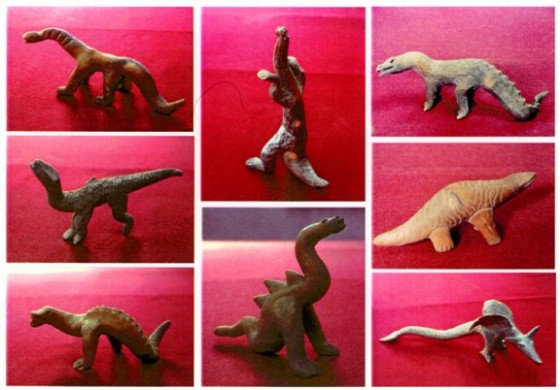
Ditemukan : 1944
Angka Acámbaro adalah koleksi patung keramik kecil yang ditemukan diduga di Acámbaro , Guanajuato , Meksiko. Mereka ditemukan oleh Waldemar Julsrud pada bulan Juli 1944. Menurut laporan , Julsrud stumbled atas artefak sementara menunggang kuda di daerah Acámbaro . Dia menyewa seorang petani lokal untuk menggali angka yang tersisa , membayar dia untuk setiap objek yang ia temukan. Akhirnya , petani dan asistennya menemukan lebih dari 32.000 angka , termasuk representasi dari segala sesuatu dari dinosaurus kepada orang-orang dari seluruh dunia , termasuk Mesir , Sumeria , dan Kaukasia berjanggut . Angka Acámbaro miliki. telah disebut sebagai tempat dari artefak , seperti yang jelas buatan manusia dan menggambarkan berbagai macam spesies dinosaurus . Menurut semua buku-buku sejarah , manusia tidak tinggal di masa dinosaurus . Atas penemuan angka , kreasionis banyak dari seluruh dunia memproklamasikan artefak yang sah . Jika angka-angka yang asli , bisa berdiri sebagai bukti kredibel untuk hidup berdampingan dengan dinosaurus dan manusia , yang sangat akan merusak teori evolusi dan menawarkan dukungan untuk penafsiran literal dari Alkitab .
Upaya-upaya telah dilakukan untuk tanggal Termoluminesensi menggunakan angka-angka ini , atau TL kencan , dan hasil mengusulkan tanggal sekitar 2500 SM . Seorang pria bernama Don Patton mengklaim dia menemukan tanggal radiokarbon untuk angka-angka mulai dari 6500 tahun ke 1500 tahun yang lalu , namun objek dalam bentuk yang sangat baik dan tidak menunjukkan bukti karakteristik yang telah di tanah setidaknya 1500 tahun . Jika mereka artefak otentik , mereka harus tergores dan dirusak dari tanah berbatu , yang merupakan karakteristik dari objek lain yang ditemukan di daerah Meksiko. Lain pendukung tokoh klaim bahwa rincian yang luar biasa dari dinosaurus menyarankan sebuah pengalaman langsung dengan makhluk . Banyaknya tokoh ditemukan sering dikutip sebagai bukti untuk tipuan. Sampai saat ini , tidak ada ulama yang kredibel arkeologi atau paleontologi menerima penemuan sebagai valid.
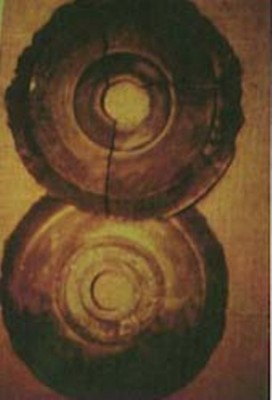
Ditemukan : 1938
Itu dugaan kisah Dropa Stones adalah sebagai berikut . Pada tahun 1938 , sebuah ekspedisi arkeologi telah dikirim untuk menyelidiki wilayah terpencil di Pegunungan Baian – Kara – Ula di perbatasan yang memisahkan Cina dan Tibet grup ini menemukan serangkaian gua di puncak gunung . . Gua berisi koleksi besar kuburan dan dinding-dindingnya dihiasi dengan gambar orang dengan kepala memanjang bersama dengan gambar matahari , bulan , dan bintang-bintang . Para arkeolog menemukan kuburan dan menemukan sisa-sisa makhluk kuno . Para tengkorak yang sedikit lebih dari tiga meter , dengan normal tengkorak besar . Di dalam makam koleksi batu disk pulih The disk hampir dua belas inci dalam diameter , dengan lubang di tengahnya. . Benda memiliki alur pada permukaan disk berputar dan keluar dari pusat lubang membentuk spiral ganda . pemeriksaan lebih dekat menunjukkan bahwa sebenarnya alur garis ukiran kecil atau tanda-tanda .
Disk berlabel Dropa Stones penyelidikan selanjutnya . telah menemukan total 716 Dropa Stones di gua-gua Mountain Baian – Kara – Ula . The Dropa Stones dikirim ke berbagai ahli untuk penyelidikan . Salah satunya , Profesor Tsum Um Nui dari Akademi Beijing untuk Studi Kuno , menemukan bahwa alur spiral sebenarnya garis karakter yang ditulis dalam bahasa yang tidak diketahui Pada tahun 1962 , ia mengumumkan bahwa ia telah berhasil menerjemahkan bahasa . . Untuk waktu yang lama , Akademi Prasejarah Peking dari melarang profesor dari penerbitan apa-apa tentang Dropa Stones . Namun , setelah perdebatan bertahun-tahun dia menerbitkan hipotesis .
Tsum Um Nui mengklaim bahwa pesawat ruang angkasa asing jatuh di wilayah Shan Bayan Har 12.000 tahun yang lalu itu penumpangnya alien disebut Dropa atau Dzopa . . The Dropa tidak bisa memperbaiki keterampilan mereka , sehingga mereka mencoba untuk beradaptasi dengan kondisi di Bumi . Sementara itu, suku Ham lokal diburu dan membunuh sebagian besar dari alien . Seharusnya , alien telah menikah dengan penduduk setempat , membuat identifikasi asal-usul dari kerangka yang lebih sulit Banyak orang telah menentang klaim-klaim dan Tsum Um Nui . dipaksa untuk mengundurkan diri dari Akademi Beijing . The Dropa Stones telah menghilang seluruh dunia dan tidak tersedia untuk dilihat publik di museum apapun . Namun , foto-foto benda tidak ada.
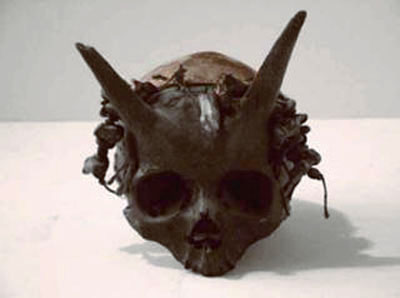
Ditemukan : 1880
Sayre adalah sebuah kota kecil di Bradford County , Pennsylvania , 59 mil barat laut Scranton Tahun yang tepat tidak jelas , namun selama 1880-an gundukan sebuah kuburan besar ditemukan pada Sayre . Itu adalah melaporkan bahwa sekelompok orang Amerika menemukan beberapa tengkorak manusia aneh dan tulang . The tengkorak milik anatomis laki-laki normal dengan pengecualian proyeksi kurus terletak sekitar dua inci di atas alis Ternyata bahwa tengkorak itu tanduk . . Tulang-tulang itu dicirikan sebagai raksasa , karena mereka mewakili orang lebih dari tujuh kaki tinggi . Ilmuwan diperkirakan bahwa korban telah dimakamkan di sekitar AD 1200. Penemuan arkeologi dibuat oleh sekelompok disegani antiquarians , termasuk Dr GP Donehoo , negara bagian Pennsylvania pembesar Gereja Presbyterian ; AB Skinner , American Museum Investigasi , dan WKMorehead , dari Phillips Academy , Andover , Massachusetts .
Bukan pertama kalinya tengkorak raksasa bertanduk telah digali di Amerika Utara . Selama abad ke-19 , tengkorak serupa ditemukan di dekat Wellsville , New York dan di pertambangan dekat desa ke El Paso , Texas . Pada suatu waktu dalam sejarah , tanduk manusia digunakan sebagai tanda-tanda kerajaan Alexander . Great digambarkan dengan tanduk pada beberapa koin nya . Pada waktu Musa, tanduk adalah simbol otoritas dan kekuasaan . Banyak dewa-dewa , termasuk Yahweh , telah digambarkan dengan tanduk . Menurut catatan sejarah , tulang-tulang Sayre tersebut diduga dikirim ke Amerika Investigasi Museum di Philadelphia Namun, artefak yang dicuri dan tidak pernah terlihat lagi . . gambar Jelas dari tengkorak memang ada , tetapi banyak orang mengklaim penemuan yang akan tipuan Banyak situs menyarankan bahwa obyek yang berasal dari luar bumi . .
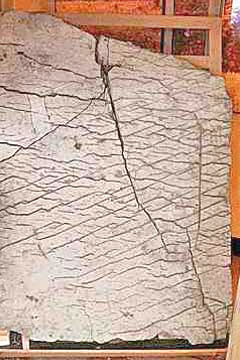
Ditemukan : 1999
In 1999, a professor at Bashkir State University in Russia named Alexander Chuvyrov made a remarkable archeological discovery. He was called to the house of Vladimir Krainov, who reported a strange slab buried in his backyard. Chuvyrov was instantly intrigued, as he had been searching for similar slabs that have been cited in various historical manuscripts. The slab was so heavy that it took over a week to unearth. The discovery was named the Dashka stone and later titled the Map of the Creator. The artifact is approximately 5 feet high, 3.5 feet wide, .5 feet thick, and weighs at least one ton. The stone was investigated and determined to be some sort of three-dimensional relief map of the Ural Region. Today’s military uses similar maps to measure elevation and terrain. The Dashka stone reportedly contains representations of civil engineering work, weirs, an irrigation system, and powerful dams. To date, the ancient technology used to make the map is unknown and extremely advanced.
The map also contains numerous inscriptions. At first, the scientists thought that it was an Old Chinese language, although it was later reported that the inscriptions were done in a hieroglyphic-syllabic language of unknown origin. A group of Russian and Chinese specialists in the fields of cartography, physics, mathematics, geology, chemistry, and Old Chinese language researched the artifact and were the ones that identified it as a map of Ural region, with rivers Belya, Ufimka, and Sutolka listed. Dating of the slab was reported to be over 100 million years old, but I couldn’t find any reliable resources citing evidence of what type of test was used or the exact results. If the Map of the Creator is genuine then it would suggest the existence of an ancient highly developed civilization. Researchers have claimed that a three-dimensional map of this order could have only been used for navigational purposes. Many websites claim that the slab is proof of ancient flight. Recent discoveries indicate that the slab is a piece of a larger artifact. The Dashka stone continues to undergo scientific testing and is not available for public viewing.
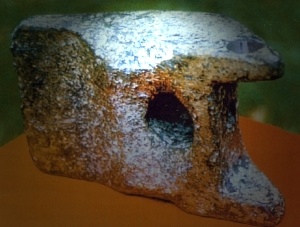
Discovered: 1974
The Aluminum Wedge of Aiud is a wedge-shaped object found two kilometers east of Aiud, Romania, on the banks of the Mures River in 1974. The object was reported to be unearthed 35 feet under sand and alongside two mastodon bones. A mastodon is an extinct large tusked mammal species. Physically, the artifact looked similar to the head of a hammer. The wedge was allegedly taken to the Archeological Institute of Cluj-Napoca to be examined, where it was found to be made of an alloy of aluminum encased in a thin layer of oxide. The alloy of the wedge is composed of 12 different elements. This artifact is considered strange because aluminum was not discovered until 1808 and not produced in quantity until 1885. Aluminium requires 1,000 degrees of heat to be made. The fact that the wedge was found in the same layer of earth as mastodon bones would make it at least 11,000 years old.
Many people have claimed that the artifact is proof that aliens visited Earth. Engineers have reported that the object resembles the foot of landing gear, not unlike the technology used on spaceships. The scientific community believes the wedge was made on earth and its purpose is not yet identified. Due to the limited amount of information that exists on the subject, the antiquity and origin of the artifact is unclear. The Aluminium Wedge of Aiud is not on display to the public and remains in an undisclosed location. However, pictures of the wedge do exist.
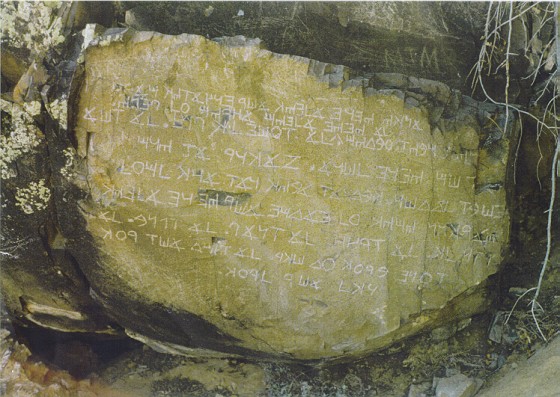
Discovered: 1880s
The Los Lunas Decalogue Stone is a large boulder on the side of Hidden Mountain, near Los Lunas, New Mexico, about 35 miles south of Albuquerque. The stone bears a regular inscription carved into a flat panel. The inscription is interpreted by some to be an abridged version of the Decalogue or Ten Commandments in a form of Paleo-Hebrew. A letter group resembling the tetragrammaton YHWH, or “Yahweh,” makes four appearances on the stone. The first recorded mention of the artifact is from 1933 when Professor Frank Hibben, an archaeologist from the University of New Mexico, reportedly saw it. Hibben was led to the stone by an unnamed guide who claimed to have found it as a boy in the 1880s. If this information is accurate, a forgery would be unlikely because the Paleo-Hebrew script was unknown to scholars in the 1880s.
One argument against the stone’s authenticity is the apparent use of Modern Hebrew punctuation, although epigrapher Barry Fell argued that the punctuation is consistent with antiquity. Other researchers dismiss the artifact based on the numerous stylistic and grammatical errors that appear in the inscription. The stone is controversial because many feel the artifact is Pre-Columbian and proof of early Semitic contact with the Americas, providing evidence that people from Israel settled in America. Because of the stone’s weight of over 80 tons, it was never moved to a museum or laboratory for study and safekeeping. The stone is accessible to visitors by purchasing a $25 Recreational Access Permit from the New Mexico State Land Office.
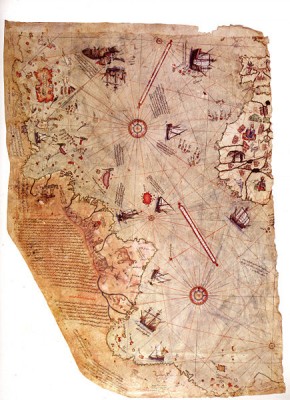
Discovered: 1929
The Topkap? Palace is a historical structure that is located in Istanbul, Turkey. The palace was the official and primary residence of the Ottoman Sultans for 400 years of their 600-year reign, from 1465 to 1856. In 1929, the Topkap? Palace was converted into a museum. Many ancient artifacts were found during the building’s reorganization and the Piri Reis map was discovered. The map drew immediate attention as it was one of the earliest maps of America, and the only 16th century map that shows South America in its proper longitudinal position in relation to Africa. The map is drawn on gazelle skin and was compiled in 1513 by Ottoman-Turkish military admiral and cartographer Piri Reis. The half of the map which survives shows the western coasts of Europe, North Africa, and the coast of Brazil. Various Atlantic islands, including the Azores and Canary Islands are shown, as is the mythical island of Antillia and possibly Japan.
The most puzzling aspect of the map is its depiction of Antarctica. According to the history books, the first confirmed sighting of Antarctica occurred in 1820 by the Russian expedition of Mikhail Lazarev and Fabian Gottlieb von Bellingshausen. The Piri Reis map not only shows a land mass near present day Antarctica, but it depicts Antarctica’s topography as not being masked by ice and in great detail. It has been estimated that Antarctica has been covered with ice for around 6000 years. Many people have raised the question, how could a Turksih admiral from half a millennium ago map a continent’s topography that has been covered with ice for thousands of years? Reports have been published claiming that the Ottoman Empire had knowledge of some form of ancient Ice Age civilization. However, these claims are generally considered to be pseudo-scholarship, and the scholarly opinion is that the region sometimes thought of as Antarctica is more likely Patagonia or the Terra Australis Incognita (Unknown Southern Land) widely believed to exist before the Southern Hemisphere was fully explored.
On the map, Piri Reis gives resource credit to a map drawn by Christopher Columbus, which has never been discovered. Geographers have spent several centuries unsuccessfully searching for a “lost map of Columbus” that was supposedly drawn while he was in the West Indies. After the discovery of the Piri Reis map, an unsuccessful investigation was launched to find the lost Columbus source map. The historical importance of the Piri Reis map lies in its demonstration of the extent of Portuguese knowledge of the New World in 1510. The Piri Reis map is currently located in the Library of the Topkap? Palace in Istanbul, Turkey, but is not currently on display to the public.
In the last few centuries, many strange archeological discoveries
have been made in the Americas. It seems that people are unearthing
extremely unusual and giant human remains. Many documented accounts of
these findings exist. Giant human remains are classified as any bones
representative of a person between seven and twelve feet in stature. A
human skeleton measuring 12 feet tall was unearthed at Lompock Rancho,
California, in 1833 by soldiers digging a pit for a powder magazine.
The specimen had a double row of teeth and was surrounded by numerous
stone axes, carved shells, and porphyry blocks with abstruse symbols
associated with it. In 1856, a decaying human skeleton measuring 10 feet
9 inches tall was unearthed by laborers plowing a vineyard in what is
now West Virginia. A mound discovered near Toledo, Ohio in 1895 held 20
skeletons; they were seated and facing east with jaws and teeth “twice
as large as those of present day people.” In 1928, a farmer digging a
pit to bury trash near Waterproof, Louisiana unearthed a 9 foot 11 inch
tall skeleton.10. Angka Acámbaro

Ditemukan : 1944
Angka Acámbaro adalah koleksi patung keramik kecil yang ditemukan diduga di Acámbaro , Guanajuato , Meksiko. Mereka ditemukan oleh Waldemar Julsrud pada bulan Juli 1944. Menurut laporan , Julsrud stumbled atas artefak sementara menunggang kuda di daerah Acámbaro . Dia menyewa seorang petani lokal untuk menggali angka yang tersisa , membayar dia untuk setiap objek yang ia temukan. Akhirnya , petani dan asistennya menemukan lebih dari 32.000 angka , termasuk representasi dari segala sesuatu dari dinosaurus kepada orang-orang dari seluruh dunia , termasuk Mesir , Sumeria , dan Kaukasia berjanggut . Angka Acámbaro miliki. telah disebut sebagai tempat dari artefak , seperti yang jelas buatan manusia dan menggambarkan berbagai macam spesies dinosaurus . Menurut semua buku-buku sejarah , manusia tidak tinggal di masa dinosaurus . Atas penemuan angka , kreasionis banyak dari seluruh dunia memproklamasikan artefak yang sah . Jika angka-angka yang asli , bisa berdiri sebagai bukti kredibel untuk hidup berdampingan dengan dinosaurus dan manusia , yang sangat akan merusak teori evolusi dan menawarkan dukungan untuk penafsiran literal dari Alkitab .
Upaya-upaya telah dilakukan untuk tanggal Termoluminesensi menggunakan angka-angka ini , atau TL kencan , dan hasil mengusulkan tanggal sekitar 2500 SM . Seorang pria bernama Don Patton mengklaim dia menemukan tanggal radiokarbon untuk angka-angka mulai dari 6500 tahun ke 1500 tahun yang lalu , namun objek dalam bentuk yang sangat baik dan tidak menunjukkan bukti karakteristik yang telah di tanah setidaknya 1500 tahun . Jika mereka artefak otentik , mereka harus tergores dan dirusak dari tanah berbatu , yang merupakan karakteristik dari objek lain yang ditemukan di daerah Meksiko. Lain pendukung tokoh klaim bahwa rincian yang luar biasa dari dinosaurus menyarankan sebuah pengalaman langsung dengan makhluk . Banyaknya tokoh ditemukan sering dikutip sebagai bukti untuk tipuan. Sampai saat ini , tidak ada ulama yang kredibel arkeologi atau paleontologi menerima penemuan sebagai valid.
9. The Dropa Stones

Ditemukan : 1938
Itu dugaan kisah Dropa Stones adalah sebagai berikut . Pada tahun 1938 , sebuah ekspedisi arkeologi telah dikirim untuk menyelidiki wilayah terpencil di Pegunungan Baian – Kara – Ula di perbatasan yang memisahkan Cina dan Tibet grup ini menemukan serangkaian gua di puncak gunung . . Gua berisi koleksi besar kuburan dan dinding-dindingnya dihiasi dengan gambar orang dengan kepala memanjang bersama dengan gambar matahari , bulan , dan bintang-bintang . Para arkeolog menemukan kuburan dan menemukan sisa-sisa makhluk kuno . Para tengkorak yang sedikit lebih dari tiga meter , dengan normal tengkorak besar . Di dalam makam koleksi batu disk pulih The disk hampir dua belas inci dalam diameter , dengan lubang di tengahnya. . Benda memiliki alur pada permukaan disk berputar dan keluar dari pusat lubang membentuk spiral ganda . pemeriksaan lebih dekat menunjukkan bahwa sebenarnya alur garis ukiran kecil atau tanda-tanda .
Disk berlabel Dropa Stones penyelidikan selanjutnya . telah menemukan total 716 Dropa Stones di gua-gua Mountain Baian – Kara – Ula . The Dropa Stones dikirim ke berbagai ahli untuk penyelidikan . Salah satunya , Profesor Tsum Um Nui dari Akademi Beijing untuk Studi Kuno , menemukan bahwa alur spiral sebenarnya garis karakter yang ditulis dalam bahasa yang tidak diketahui Pada tahun 1962 , ia mengumumkan bahwa ia telah berhasil menerjemahkan bahasa . . Untuk waktu yang lama , Akademi Prasejarah Peking dari melarang profesor dari penerbitan apa-apa tentang Dropa Stones . Namun , setelah perdebatan bertahun-tahun dia menerbitkan hipotesis .
Tsum Um Nui mengklaim bahwa pesawat ruang angkasa asing jatuh di wilayah Shan Bayan Har 12.000 tahun yang lalu itu penumpangnya alien disebut Dropa atau Dzopa . . The Dropa tidak bisa memperbaiki keterampilan mereka , sehingga mereka mencoba untuk beradaptasi dengan kondisi di Bumi . Sementara itu, suku Ham lokal diburu dan membunuh sebagian besar dari alien . Seharusnya , alien telah menikah dengan penduduk setempat , membuat identifikasi asal-usul dari kerangka yang lebih sulit Banyak orang telah menentang klaim-klaim dan Tsum Um Nui . dipaksa untuk mengundurkan diri dari Akademi Beijing . The Dropa Stones telah menghilang seluruh dunia dan tidak tersedia untuk dilihat publik di museum apapun . Namun , foto-foto benda tidak ada.
8. Tengkorak Manusia bertanduk

Ditemukan : 1880
Sayre adalah sebuah kota kecil di Bradford County , Pennsylvania , 59 mil barat laut Scranton Tahun yang tepat tidak jelas , namun selama 1880-an gundukan sebuah kuburan besar ditemukan pada Sayre . Itu adalah melaporkan bahwa sekelompok orang Amerika menemukan beberapa tengkorak manusia aneh dan tulang . The tengkorak milik anatomis laki-laki normal dengan pengecualian proyeksi kurus terletak sekitar dua inci di atas alis Ternyata bahwa tengkorak itu tanduk . . Tulang-tulang itu dicirikan sebagai raksasa , karena mereka mewakili orang lebih dari tujuh kaki tinggi . Ilmuwan diperkirakan bahwa korban telah dimakamkan di sekitar AD 1200. Penemuan arkeologi dibuat oleh sekelompok disegani antiquarians , termasuk Dr GP Donehoo , negara bagian Pennsylvania pembesar Gereja Presbyterian ; AB Skinner , American Museum Investigasi , dan WKMorehead , dari Phillips Academy , Andover , Massachusetts .
Bukan pertama kalinya tengkorak raksasa bertanduk telah digali di Amerika Utara . Selama abad ke-19 , tengkorak serupa ditemukan di dekat Wellsville , New York dan di pertambangan dekat desa ke El Paso , Texas . Pada suatu waktu dalam sejarah , tanduk manusia digunakan sebagai tanda-tanda kerajaan Alexander . Great digambarkan dengan tanduk pada beberapa koin nya . Pada waktu Musa, tanduk adalah simbol otoritas dan kekuasaan . Banyak dewa-dewa , termasuk Yahweh , telah digambarkan dengan tanduk . Menurut catatan sejarah , tulang-tulang Sayre tersebut diduga dikirim ke Amerika Investigasi Museum di Philadelphia Namun, artefak yang dicuri dan tidak pernah terlihat lagi . . gambar Jelas dari tengkorak memang ada , tetapi banyak orang mengklaim penemuan yang akan tipuan Banyak situs menyarankan bahwa obyek yang berasal dari luar bumi . .
7. Peta Sang Pencipta

Ditemukan : 1999
In 1999, a professor at Bashkir State University in Russia named Alexander Chuvyrov made a remarkable archeological discovery. He was called to the house of Vladimir Krainov, who reported a strange slab buried in his backyard. Chuvyrov was instantly intrigued, as he had been searching for similar slabs that have been cited in various historical manuscripts. The slab was so heavy that it took over a week to unearth. The discovery was named the Dashka stone and later titled the Map of the Creator. The artifact is approximately 5 feet high, 3.5 feet wide, .5 feet thick, and weighs at least one ton. The stone was investigated and determined to be some sort of three-dimensional relief map of the Ural Region. Today’s military uses similar maps to measure elevation and terrain. The Dashka stone reportedly contains representations of civil engineering work, weirs, an irrigation system, and powerful dams. To date, the ancient technology used to make the map is unknown and extremely advanced.
The map also contains numerous inscriptions. At first, the scientists thought that it was an Old Chinese language, although it was later reported that the inscriptions were done in a hieroglyphic-syllabic language of unknown origin. A group of Russian and Chinese specialists in the fields of cartography, physics, mathematics, geology, chemistry, and Old Chinese language researched the artifact and were the ones that identified it as a map of Ural region, with rivers Belya, Ufimka, and Sutolka listed. Dating of the slab was reported to be over 100 million years old, but I couldn’t find any reliable resources citing evidence of what type of test was used or the exact results. If the Map of the Creator is genuine then it would suggest the existence of an ancient highly developed civilization. Researchers have claimed that a three-dimensional map of this order could have only been used for navigational purposes. Many websites claim that the slab is proof of ancient flight. Recent discoveries indicate that the slab is a piece of a larger artifact. The Dashka stone continues to undergo scientific testing and is not available for public viewing.
6. Aluminium Wedge of Aiud

Discovered: 1974
The Aluminum Wedge of Aiud is a wedge-shaped object found two kilometers east of Aiud, Romania, on the banks of the Mures River in 1974. The object was reported to be unearthed 35 feet under sand and alongside two mastodon bones. A mastodon is an extinct large tusked mammal species. Physically, the artifact looked similar to the head of a hammer. The wedge was allegedly taken to the Archeological Institute of Cluj-Napoca to be examined, where it was found to be made of an alloy of aluminum encased in a thin layer of oxide. The alloy of the wedge is composed of 12 different elements. This artifact is considered strange because aluminum was not discovered until 1808 and not produced in quantity until 1885. Aluminium requires 1,000 degrees of heat to be made. The fact that the wedge was found in the same layer of earth as mastodon bones would make it at least 11,000 years old.
Many people have claimed that the artifact is proof that aliens visited Earth. Engineers have reported that the object resembles the foot of landing gear, not unlike the technology used on spaceships. The scientific community believes the wedge was made on earth and its purpose is not yet identified. Due to the limited amount of information that exists on the subject, the antiquity and origin of the artifact is unclear. The Aluminium Wedge of Aiud is not on display to the public and remains in an undisclosed location. However, pictures of the wedge do exist.
5. Los Lunas Decalogue Stone

Discovered: 1880s
The Los Lunas Decalogue Stone is a large boulder on the side of Hidden Mountain, near Los Lunas, New Mexico, about 35 miles south of Albuquerque. The stone bears a regular inscription carved into a flat panel. The inscription is interpreted by some to be an abridged version of the Decalogue or Ten Commandments in a form of Paleo-Hebrew. A letter group resembling the tetragrammaton YHWH, or “Yahweh,” makes four appearances on the stone. The first recorded mention of the artifact is from 1933 when Professor Frank Hibben, an archaeologist from the University of New Mexico, reportedly saw it. Hibben was led to the stone by an unnamed guide who claimed to have found it as a boy in the 1880s. If this information is accurate, a forgery would be unlikely because the Paleo-Hebrew script was unknown to scholars in the 1880s.
One argument against the stone’s authenticity is the apparent use of Modern Hebrew punctuation, although epigrapher Barry Fell argued that the punctuation is consistent with antiquity. Other researchers dismiss the artifact based on the numerous stylistic and grammatical errors that appear in the inscription. The stone is controversial because many feel the artifact is Pre-Columbian and proof of early Semitic contact with the Americas, providing evidence that people from Israel settled in America. Because of the stone’s weight of over 80 tons, it was never moved to a museum or laboratory for study and safekeeping. The stone is accessible to visitors by purchasing a $25 Recreational Access Permit from the New Mexico State Land Office.
4. Piri Reis Map

Discovered: 1929
The Topkap? Palace is a historical structure that is located in Istanbul, Turkey. The palace was the official and primary residence of the Ottoman Sultans for 400 years of their 600-year reign, from 1465 to 1856. In 1929, the Topkap? Palace was converted into a museum. Many ancient artifacts were found during the building’s reorganization and the Piri Reis map was discovered. The map drew immediate attention as it was one of the earliest maps of America, and the only 16th century map that shows South America in its proper longitudinal position in relation to Africa. The map is drawn on gazelle skin and was compiled in 1513 by Ottoman-Turkish military admiral and cartographer Piri Reis. The half of the map which survives shows the western coasts of Europe, North Africa, and the coast of Brazil. Various Atlantic islands, including the Azores and Canary Islands are shown, as is the mythical island of Antillia and possibly Japan.
The most puzzling aspect of the map is its depiction of Antarctica. According to the history books, the first confirmed sighting of Antarctica occurred in 1820 by the Russian expedition of Mikhail Lazarev and Fabian Gottlieb von Bellingshausen. The Piri Reis map not only shows a land mass near present day Antarctica, but it depicts Antarctica’s topography as not being masked by ice and in great detail. It has been estimated that Antarctica has been covered with ice for around 6000 years. Many people have raised the question, how could a Turksih admiral from half a millennium ago map a continent’s topography that has been covered with ice for thousands of years? Reports have been published claiming that the Ottoman Empire had knowledge of some form of ancient Ice Age civilization. However, these claims are generally considered to be pseudo-scholarship, and the scholarly opinion is that the region sometimes thought of as Antarctica is more likely Patagonia or the Terra Australis Incognita (Unknown Southern Land) widely believed to exist before the Southern Hemisphere was fully explored.
On the map, Piri Reis gives resource credit to a map drawn by Christopher Columbus, which has never been discovered. Geographers have spent several centuries unsuccessfully searching for a “lost map of Columbus” that was supposedly drawn while he was in the West Indies. After the discovery of the Piri Reis map, an unsuccessful investigation was launched to find the lost Columbus source map. The historical importance of the Piri Reis map lies in its demonstration of the extent of Portuguese knowledge of the New World in 1510. The Piri Reis map is currently located in the Library of the Topkap? Palace in Istanbul, Turkey, but is not currently on display to the public.
3. Giants of North America
The list of these discoveries is quite extensive and many claims have been made about the origin of these giant bones, usually starting and ending with Sasquatch. Others have suggested an ancient race of giant humans. In 1947, a strange article was posted in a Nevada state newspaper, titled ‘Atlantis in the Colorado River Desert’. The article discussed an incredible archeological discovery of 32 underground caves within a 180 square mile radius. The report indicated that the caves were discovered close to the Nevada and California border. The remains of ancient, strangely costumed 8 -9 foot giants were inside. They had been laid to rest wearing the skins of unknown animals similar to sheepskins fashioned into jackets with pants described as “prehistoric suits.” The same burial place had been cited 10-15 years earlier by another man who supposedly made a deal with the Smithsonian. Claims have been made that the evidence of his find was stolen and covered up by Darwinian scientists to protect the theory of evolution.
The caves were reported to have been discovered by Dr. F Bruce Russell. He initially described the finding as the burial place of a tribal hierarchy. He felt that some unknown catastrophe had driven these beings into the caves. All of the implements of their civilization were there, including household utensils and stoves. Well-preserved remains of dinosaurs, saber-toothed tigers, imperial elephants, and other extinct beasts were found. No physical archeological evidence of these claims has ever been displayed. Photo: worth1ooo.com.
2. Kensington Runestone
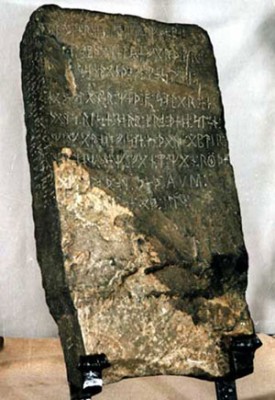
Discovered: 1898
Pada tahun 1898 , seorang petani bernama Amerika Swedia Olof Öhman mengklaim telah menemukan sebuah batu besar sambil membersihkan tanahnya pohon dan tunggul . Benda itu melekat pada akar pohon kecil . Öhman tidak menyadari apa yang telah ditemukan, maka ia mengambil batu £ 200 kepada warga terkemuka Kensington . Kensington adalah pemukiman di Douglas County , Minnesota The Kensington Batu Rune penuh tulisan kuno dan ukiran teks . . Ini adalah tiga puluh satu inci tinggi , lebar enam belas inci , dan enam inci tebal Sembilan tahun setelah penemuan artefak , . Hjalmer R. Høland dari Universitas Wisconsin mengumumkan bahwa ia telah memecahkan tulisan . Dia mengklaim teks untuk membaca “8 Goth dan 22 Norwegia pada perjalanan eksplorasi dari Vinland di barat . Kami kamp oleh 2 Skerries satu hari perjalanan dari batu ini Kami . dan merogoh satu hari . Setelah kami pulang , 10 orang merah dengan darah dan disiksa Salam Virgin . Maria , menyelamatkan dari kejahatan Memiliki 10 orang dengan laut untuk menjaga kapal kami , 14. hari – perjalanan dari pulau tahun 1362 ini . “
Setelah Høland mempublikasikan hasil penemuannya , sebuah investigasi besar-besaran dilakukan . Jika terjemahan ini benar, Batu Rune Kensington akan memberikan bukti bahwa penjelajah Skandinavia mencapai tengah Amerika Utara pada abad ke-14 , hampir 130 tahun sebelum Christopher Columbus . Pada dasarnya , menaikkan alis atas kemungkinan bahwa penjelajah Eropa Utara mendahului Columbus di Amerika . Batu Rune ini telah dianalisis dan diberhentikan berulang kali Hampir semua runologists dan ahli bahasa menganggap artefak yang akan tipuan. . Namun , banyak orang percaya itu adalah otentik . Jika legenda pada batu tersebut benar, itu berarti bahwa Minnesota Vikings berada di pusat di 1362 itu akan membutuhkan penulisan ulang besar sejarah dunia dan geografi . . Kensington Prasasti terdiri dari tiga puluh karakter rahasia yang berbeda .
Pada bulan Juli 2000 , hanya lebih dari seratus tahun setelah Batu Rune Kensington ditemukan , analisis fisik rinci artefak tersebut dilakukan . Pada November 2000, ahli geologi F. Scott Wolter mempresentasikan temuan awal menunjukkan batu itu telah mengalami – di – tanah pelapukan proses minimal 5-20 tahun dalam kondisi alam Scott F. . Wolter telah menulis beberapa buku tentang Batu Rune Kensington . Dia telah menyarankan bahwa batu itu dibuat oleh Viking Knight Templar di 1362 , lima puluh tahun setelah pembubaran Templar Knight dan beberapa ratus tahun setelah akhir zaman Viking . Ia juga mengklaim bahwa ekspedisi Columbus Amerika Utara membantu menemukan jalan di Hindia Barat pada tahun 1492 artefak tetap misteri . . Anda dapat melihatnya pada Museum Batu Rune di pusat kota Alexandria , Minnesota .
1. Kain Kafan dari Turin
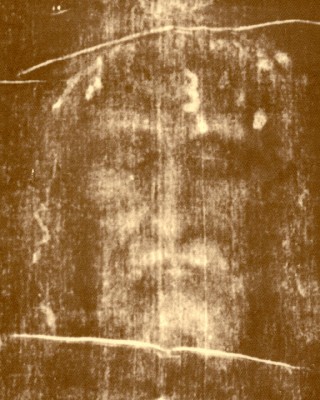
Kain Kafan dari Turin adalah kain linen bantalan gambar seorang pria yang tampaknya telah mengalami trauma fisik dengan cara yang konsisten dengan penyaliban Yesus Kristus. linen adalah potret seluruh badan dan ukuran 14 kaki , 3 inci panjang dengan 3 kaki , 7 inci lebar . kain kafan ini dibungkus sutra merah dan telah disimpan di dada perak di Kapel Kain Kafan Suci di Katedral Santo Yohanes Pembaptis di Turin , Italia sejak 1578 . Asal-usul dari artefak dan perusahaan gambar telah menjadi subyek perdebatan di kalangan ilmuwan , sejarawan , dan peneliti . mukmin berpendapat bahwa kain kafan adalah kain yang ditempatkan pada tubuh Yesus Kristus pada saat pemakaman-Nya , dan bahwa citra wajah adalah Wajah Kudus Yesus. Para penentang berpendapat bahwa materi kain kafan postdates penyaliban Yesus oleh lebih dari seribu tahun. Pada tahun 1988 , dating radiokarbon dilakukan pada kain kafan dalam upaya untuk menentukan keaslian relik itu . pengujian menunjukkan bahwa kain yang ditenun antara 1260 dan 1390 Masehi , lebih lambat dari zaman Yesus .
Hasil ini telah ditantang oleh peer- review jurnal dan banyak kritikus telah mengangkat pertanyaan tentang sifat asli dari sampel yang digunakan dalam ujian . Gereja Katolik telah secara resmi disetujui atau tidak ditolak kain kafan, tetapi pada tahun 1958 Paus Pius XII disetujui foto dalam asosiasi dengan devosi Katolik Roma untuk Wajah Kudus Yesus . Pada tanggal 28 Mei , 1898 fotografer amatir Italia Secondo Pia mengambil foto pertama kain kafan dan terkejut dengan apa yang dia temukan . yang negatif memberikan penampilan citra positif , yang menyiratkan bahwa kain kafan itu sendiri adalah negatif semacam Gambar analisis . oleh para ilmuwan di Jet Propulsion Laboratory menemukan bahwa alih-alih seperti foto negatif , gambar tersebut tiba-tiba memiliki sifat decoding menjadi gambar 3- D . properti ini tidak bisa dapat direplikasi oleh peneliti Satu teori adalah bahwa gambar pada kain kafan adalah hanya lukisan. . Kedua skeptis dan pendukung cenderung memiliki posisi yang sangat kuat pada pembentukan dan penemuan Kain Kafan dari Turin . Pada saat-saat kontroversi adalah sumuran ilmu ilahi versus pembentukan , yang membuat dialog yang sangat sulit . Kain Kafan dari Turin tetap menjadi salah satu artefak paling misterius di dunia.
Creative By : "M.Syahrur"
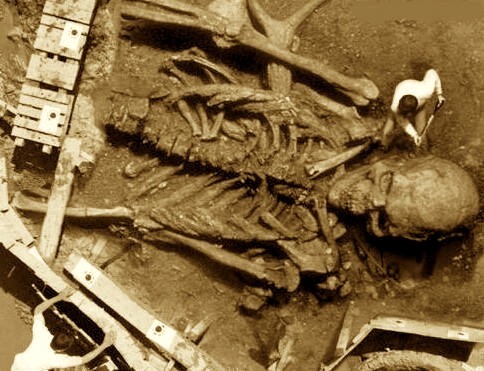
No comments:
Post a Comment